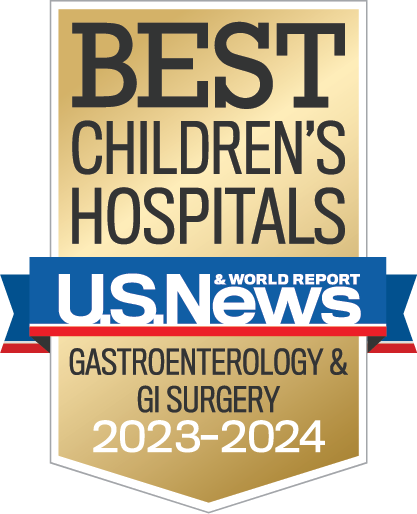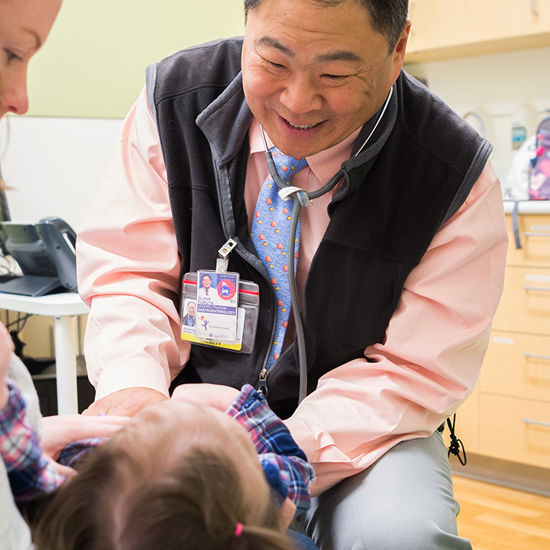- Doctors & Departments
-
Conditions & Advice
- Overview
- Conditions and Symptoms
- Symptom Checker
- Parent Resources
- The Connection Journey
- Calm A Crying Baby
- Sports Articles
- Dosage Tables
- Baby Guide
-
Your Visit
- Overview
- Prepare for Your Visit
- Your Overnight Stay
- Send a Cheer Card
- Family and Patient Resources
- Patient Cost Estimate
- Insurance and Financial Resources
- Online Bill Pay
- Medical Records
- Policies and Procedures
- We Ask Because We Care
Click to find the locations nearest youFind locations by region
See all locations -
Community
- Overview
- Addressing the Youth Mental Health Crisis
- Calendar of Events
- Child Health Advocacy
- Community Health
- Community Partners
- Corporate Relations
- Global Health
- Patient Advocacy
- Patient Stories
- Pediatric Affiliations
- Support Children’s Colorado
- Specialty Outreach Clinics
Your Support Matters
Upcoming Events
Mental Health Town Hall
Tuesday, April 23, 2024Join Children’s Hospital Colorado pediatric experts for a virtual...
-
Research & Innovation
- Overview
- Clinical Trials
- Q: Pediatric Health Advances
- Discoveries and Milestones
- Training and Internships
- Academic Affiliation
- Investigator Resources
- Funding Opportunities
- Center For Innovation
- Support Our Research
- Research Areas

It starts with a Q:
For the latest cutting-edge research, innovative collaborations and remarkable discoveries in child health, read stories from across all our areas of study in Q: Advances and Answers in Pediatric Health.


Eosinophilic Esophagitis (EoE) Treatment for Children and Teens
We pioneer and deliver some of the most groundbreaking treatments available for digestive disorders in children of all ages.

Although there isn’t a cure for EoE, treatment can help kids manage symptoms and control the inflammation in their esophagus. Specialists with the Gastrointestinal Eosinophilic Diseases Program at Children’s Hospital Colorado work closely with families to create a custom treatment plan that meets your child and your family’s specific needs.
How we treat EoE
The two most common EoE treatment methods are dietary therapy and medication. Because food allergies trigger this condition, many kids with EoE need to watch what they eat to control their symptoms. Medication can help reduce inflammation in the esophagus, allowing food to more easily pass through it. We may recommend one or both of these treatment methods for your child.
More severe forms of EoE may cause the esophagus to narrow and develop scar tissue called strictures. In this case, treatment may include dilating, or stretching, the esophagus.
Dietary therapy for EoE
There are several types of dietary therapy, each discussed in more detail below. We work closely with your family to choose the diet that is most appropriate for your child and that maximizes their quality of life.
Elemental diet
This option requires removal of all regular food and drink from a child’s diet, and they drink only a hypoallergenic formula, such as the amino-acid based Neocate or Elecare. This diet is limiting and has a significant impact on quality of life, but it is the most effective diet treatment. Approximately 90% to 95% of children respond to this diet.
Testing-directed diet
Several assessments, such as a skin prick or blood test, help identify a child’s food allergies. Although positive tests do not necessarily mean a specific food is triggering a child’s EoE, we proactively remove these foods from their diet. Response can vary, with symptoms improving in 45% to 60% of children. An allergist from our Allergy and Immunology Center will discuss food allergy testing with you during your consultation.
Empiric elimination diet
Because allergy testing isn’t always accurate, an empiric elimination diet is often used to pinpoint specific EoE triggers. There are several variations, explained below. Each requires the removal of foods known to trigger EoE.
One-food elimination diet
Cow’s milk, or dairy, is the most common EoE trigger. A one-food elimination diet includes removal of all cow’s milk products, including baked goods, yogurt, cheese and ice cream in addition to cow’s milk itself. Studies show that approximately 60% of children respond to this diet.
Two-food elimination diet
This requires removal of all cow’s milk and wheat products. Studies show that approximately 45% of patients respond to this diet.
Four-food elimination diet
This requires removal of all cow’s milk, wheat, egg and soy. Studies show that approximately 65% of patients respond to this diet.
Six-food elimination diet
The six-food elimination diet requires removal of all cow’s milk, wheat, egg, soy, peanuts and tree nuts, and fish and shellfish. Studies show that approximately 72% to 74% of patients respond to this diet.
What to expect at your visit
An allergist will review your child’s medical history and current diet, including any existing foods they may already be avoiding due to anaphylactic food allergies, celiac disease or another condition. The allergist will also discuss which dietary therapy approach may be best for your child.

Getting started on an elimination diet
Our registered dietitians can help you find a diet that controls your child's symptoms while providing nutrients for their growing body.
Medication therapy for EoE
Inhaler management for EoE
Topical corticosteroids, such as fluticasone or budesonide, were originally developed for asthma patients but can also provide relief for children with EoE. Kids and teens can take the steroid as a liquid or from an inhaler. The steroid coats the esophagus, decreasing the number of eosinophils and allowing the esophagus to heal.
Learn about how to use an inhaler or topical steroid for EoE in a video series.
Monitoring EoE treatment
Our team uses a procedure called an endoscopy to monitor EoE treatment progress. At Children’s Colorado, we’ve also developed two new procedures that are more comfortable for patients who need to receive endoscopies more frequently: the transnasal endoscopy and the esophageal string test Both of these methods achieve the same results as a normal endoscopy, but they don’t include any sedation or anesthesia. They also take less time to perform and have a much shorter recovery time. Learn about the transnasal endoscopy process through Haylie’s experience with the procedure and see how simple an esophageal string test is in our overview video.
What to expect from EoE treatment
EoE is a lifelong condition, which means it requires lifelong treatment. We carefully evaluate treatment methods, weighing the risks and benefits to ensure the best possible quality of life for your child. Our providers are here to help for the long term, both through in-person visits to Children’s Colorado and by coordinating care with your child’s primary provider.
We understand that lifestyle and dietary changes can be challenging for your child and family, which is why our multidisciplinary team includes psychologists, feeding therapists and registered dietitians. These pediatric specialists help support patients and families on an ongoing basis to ensure the lifestyle transition is manageable and as comfortable as possible.
Frequently asked questions about EoE treatment
Receiving a diagnosis for a chronic condition like EoE comes with many questions. We’ve answered several of the most common questions below.
With successful EoE treatment, both your child and your family’s quality of life should improve. Your child will feel much better—you should see improvements in their mood and sleep patterns and increased participation in activities. Mealtimes often become less stressful after we help guide you on how to manage your child’s new diet.
Our registered dietitians will work with your family to design an EoE diet and plan that maximizes nutrition for your child while working to accommodate the other needs of your family. Ask your dietitian for techniques that will make mealtimes easier for your child with EoE and their siblings.
We recognize EoE is stressful for your child and your family. Not only does the condition require frequent hospital visits and changes to what your family eats, it can also make your child feel different from other children. Identifying and managing stress associated with chronic medical illness is an important area that is often overlooked. But our multidisciplinary care team includes a psychologist so that they can help your family find healthy ways to cope with living with EoE.
Registered dietitians are nutritional experts who ensure a child is receiving the nutrients they need for healthy growth and development. Involving a registered dietitian is especially important if your child is on an elimination diet. Learn more food intolerance and elimination diet tips.
Feeding specialists observe and correct any eating or feeding challenges that patients may experience. They work to make eating as easy and comfortable as possible for patients and they provide additional therapy when necessary.
An endoscopy helps us make the initial EoE diagnosis and a follow-up endoscopy allows us to check how your child is responding to treatment. After that, the frequency of endoscopies differs from patient to patient. Your child may require more frequent endoscopies if they are not responding well to treatment, or they could have transnasal endoscopies or esophageal sting tests as part of their EoE management. At Children’s Colorado, child life specialists are available to help put your child at ease, no matter the type of procedure.
No. Though medication and an elimination diet help improve EoE symptoms, they are not a cure. If you stop medication treatment or you add food triggers back into your child’s diet, EoE symptoms will likely return.
Although steroids are a highly effective treatment method for many children with EoE, they are not always required. We strive to recommend the treatment methods we feel will successfully treat your child’s esophageal inflammation and give them the best quality of life. Your doctor will explain the benefits and risks of each method to help you make an informed decision.
Elimination diets are still an effective treatment method for EoE, even without medication.
Most children and teens tolerate swallowed topical steroids well and experience much needed relief from EoE symptoms and esophageal inflammation. However, it’s important to monitor them for increases in blood pressure, weight gain, fractures and bruising as well as possible vision problems, behavioral problems or slowed growth.
In some cases, inhaled topical steroids may interfere with the body’s ability to produce natural steroids. If this occurs, we’ll need to increase the topical steroid dosage to ensure your child is maintaining an appropriate level. For a small number of children, topical corticosteroids may cause yeast infections in the mouth and throat, which we can treat with oral antifungal medications.
Although rare, several studies of the long-term side effects of proton pump inhibitors have loosely linked the medication with diseases that can affect the brain, bones, kidneys, lungs and gastrointestinal tract. At Children's Colorado, your care team recommends the treatment options they feel are best and safest for your child, along with information about the benefits and risks of each, so you can make the best possible choices for your child.
Yes. We strive to make your visits as comfortable as possible. This includes scheduling appointments with the same specialists throughout your child’s treatment, whenever possible.
Contact us
We accept EoE treatment referrals from across the nation. To get in touch, call 720-777-7457.

Looking for a second opinion?
Whether you’re still searching for a diagnosis or exploring treatment options for your child, we’re here to help. Learn how to request a second opinion from U.S. News & World Report’s #3 pediatric gastroenterology and gastrointestinal surgery program.
Request a second opinion from our Digestive Health Institute



 720-777-0123
720-777-0123



